The Star Spangled
Banner
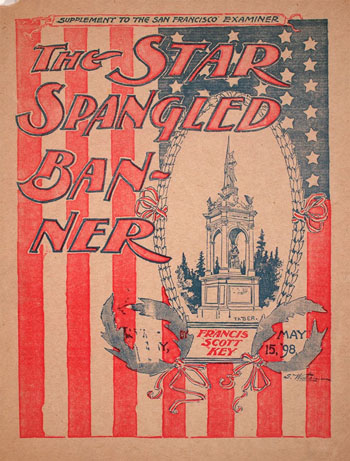
Doug Boilesen, 2024
"The Star Spangled
Banner's" sheet
music, phonograph
records, moving
pictures and talking
pictures are featured in this gallery.
Sheet
Music and the Song
"The Star-Spangled Banner"
became the the official national anthem of the United States when
the U.S. Congress passed a joint resolution on March 3, 1931 and President
Herbert Hoover signed into law.
The lyrics come from the "Defence
of Fort M'Henry", a poem written on September 14, 1814, by 35-year-old
lawyer and amateur poet Francis Scott Key after witnessing the bombardment
of Fort McHenry by British ships of the Royal Navy in Outer Baltimore
Harbor in the Patapsco River during the Battle of Baltimore in the
War of 1812. Key was inspired by the large U.S. flag, with 15 stars
and 15 stripes, known as the Star-Spangled Banner, flying triumphantly
above the fort during the U.S. victory. Wikipedia,
Star Spangled Banner.
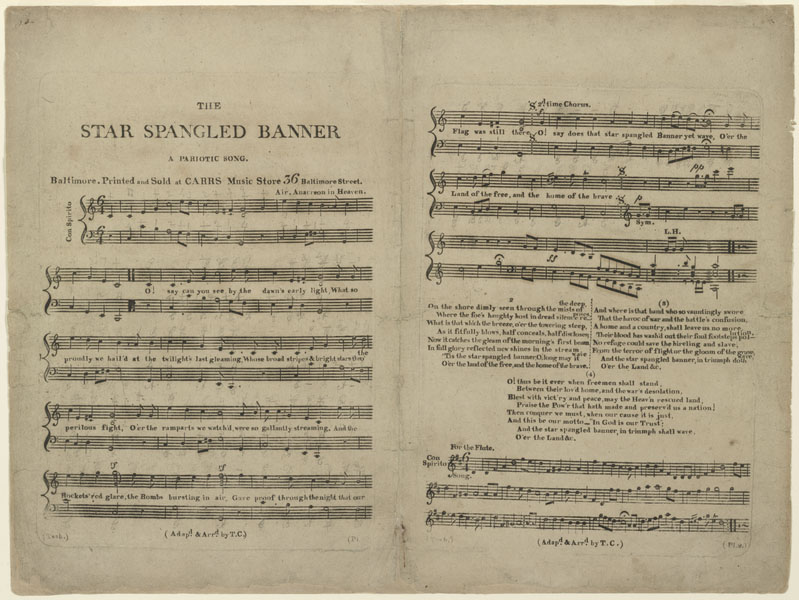
The earliest surviving sheet music
of "The Star Spangled Banner" arranged by Thomas Carr,
published on November 1,1814. Printed and Sold at CARRS Music Store,
Baltimore.
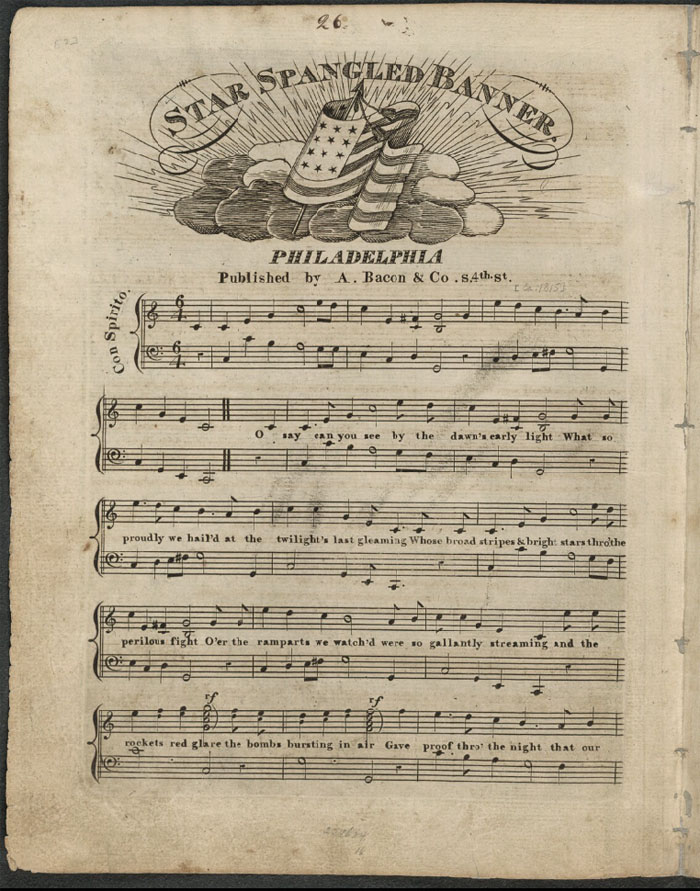
The first publication of sheet music
of "The Star Spangled Banner" with flag on it published
by A. Bacon and Co., Philadelphia, PA, [ca. 1815]. (The
Library of Congress)
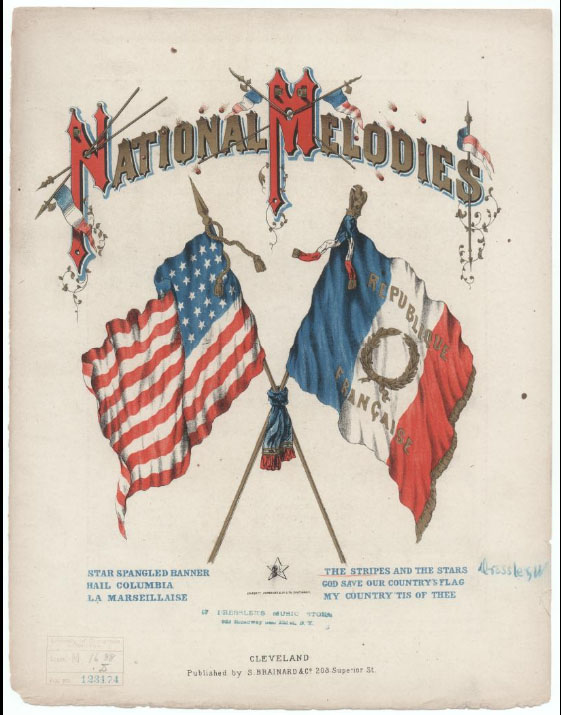
"The Stripes and
the Stars," new version of the melody of "The Star Spangled
Banner." Published by S. Brainard & Co., Cleveland. (The
Library of Congress).
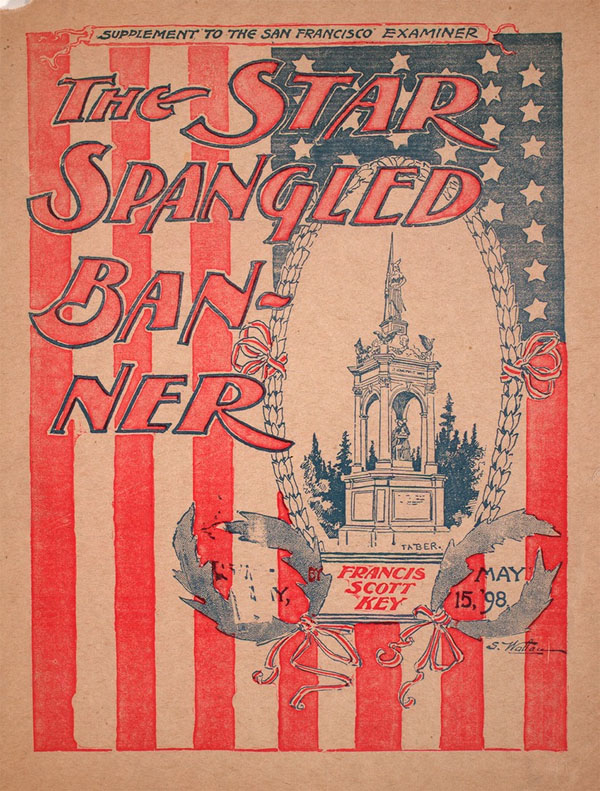
Sheet music printed as
a Supplement to the San Francisco Examiner, arranged as a
Song with Chorus by C. Merkley. May 15, 1898. (Source: The Lester
S. Levy Sheet Music Collection, Johns Hopkins).
See the Library
of Congress for a wide variety of musical arrangements of the
Star Spangled Banner that document changes throughout its history.
The Library of Congress has historically significant editions of
"The Star-Spangled Banner" and editions of "The Anacreontic
Song" by John Stafford Smith (the tune used for "The Star-Spangled
Banner").
Phonograph Records
of "The Star Spangled Banner"
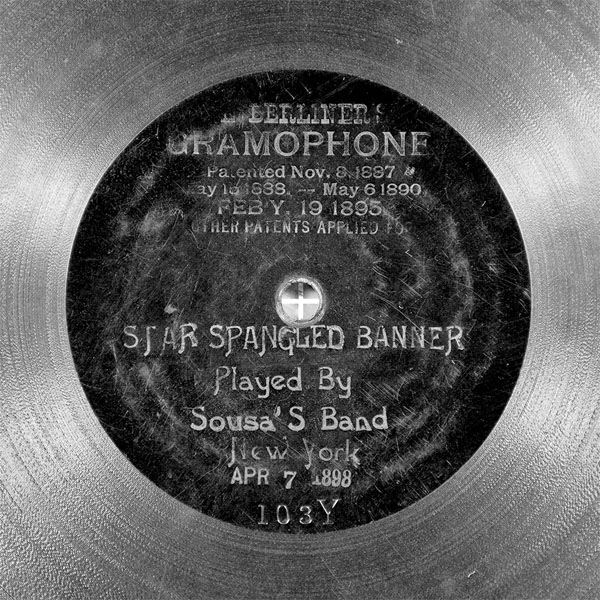
LISTEN
to The Star Spangled Banner played by Sousa's Band, Berliner
Gramophone Record 103 Y, 7" single-sided disc recorded on April
7, 1898 (Source: David Giovannoni Collection)
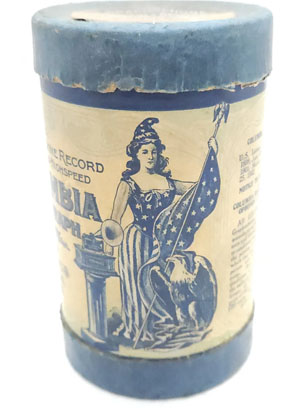
Columbia Cylinder Record
Box, 1902
LISTEN
to The Star Spangled Banner played by The Columbia Band, Columbia
2-minute moulded cylinder Record No. 1512, Released as XP c. 1902
(Source: David Giovannoni Collection).

LISTEN
to The Star Spangled Banner sung by Margaret Woodrow Wilson,
Columbia Record 10" A1685 double-sided disc (with medley of
national airs on reverse side). Recorded on January 22, 1915 and
promoted by Columbia as a Souvenir Record at the Panama-Pacific
International Exposition with Wilson's entire royalty (25¢
per record) donated to the American Red Cross to aid European war
suffers. (Source: David Giovannoni Collection).

LISTEN
to the history of "The Star Spangled Banner song"
- chorus, orchestra, fifes,
and drums, Descriptive by Harry E. Humphrey & Choir Boys of
St. Ignatius Loyola, Edison Blue Amberol 4-minute Cylinder Record
No. 2984, recorded June 24, 1916. (Source: David Giovannoni Collection).
Who's Who in the Blue Amberol
List for October
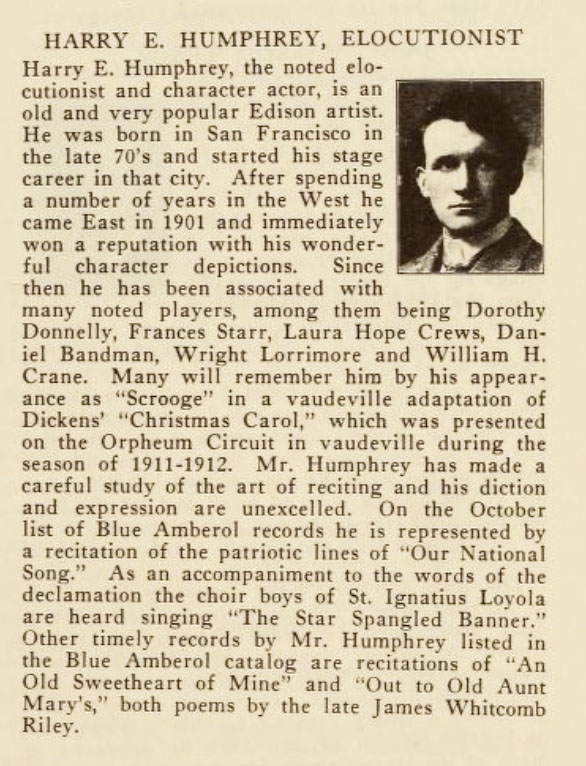
"A recitation of
the patriotic lines of "Our National Song" by Harry E.
Humphrey. The Edison Phonograph Monthly, September 1916
Moving Pictures -
"The Birth of The Star Spangled Banner," Edison Film,
1914
Edison released his historical
film drama titled "The Birth of the Star Spangled Banner"
on August 28, 1914. This film with an added piano accompaniment
can be watched
courtesy of the Library of Congress.
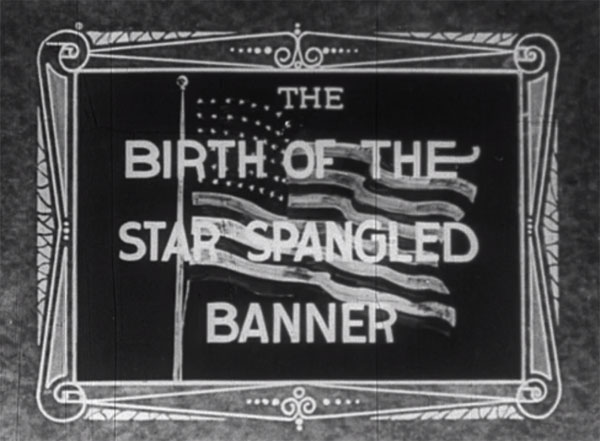
WATCH
Edison's 1914 Film "The
Birth of the Star Spangled Banner." (LOC)
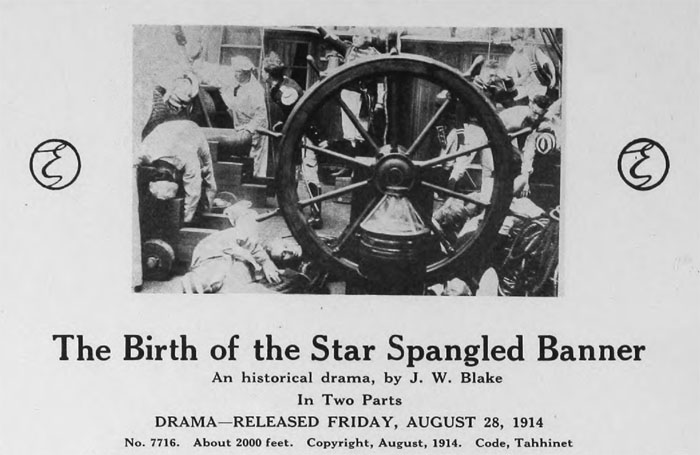
Top section of sheet poster
for Edison's "The Birth of the Star Spangled Banner," "The
Kinetogram" August 1914, p. 28 (Source: HathiTrust, original
from Ohio State University) - The Kinetogram was a semi-monthly
bulletin of Motion Picture News, with emphasis on Edison Films and
Kinetoscopes. Published by Thomas A. Edison, Inc. (See Supplemental
Notes about Edison and "The Kinetogram.")
"Written just one hundred years
ago....it will grip you from beginning to end" wrote the advertising
synopsis in "The Kinetogram" of August 1914.

"The Birth of the
Star Spangled Banner," Advertising Synopsis, "The Kinetogram"
August 1914
Since this release was
as a silent film, MUSIC QUES were provided to theatres.

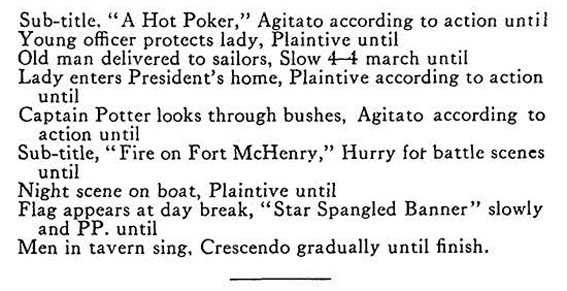
"The Birth of the
Star Spangled Banner," August 1914, "The Kinetogram."
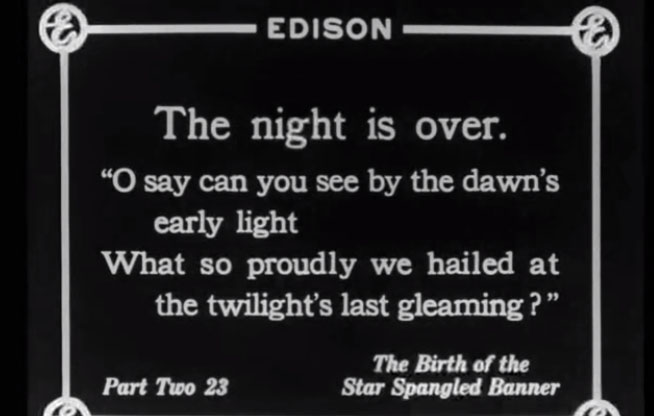
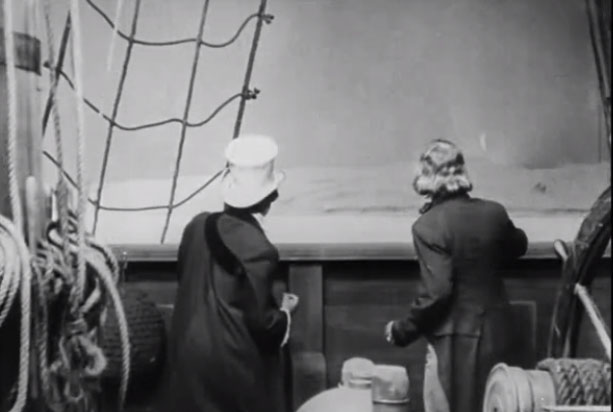
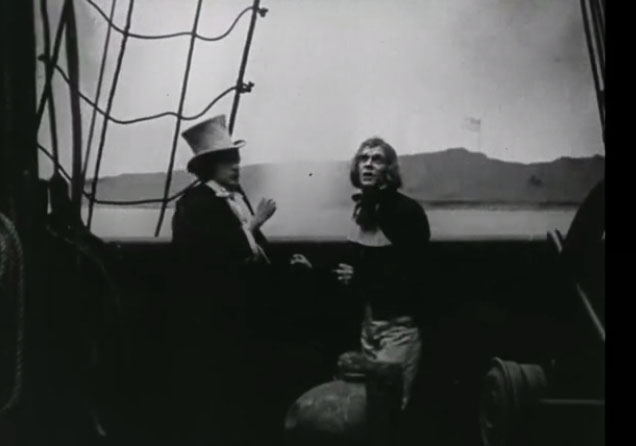

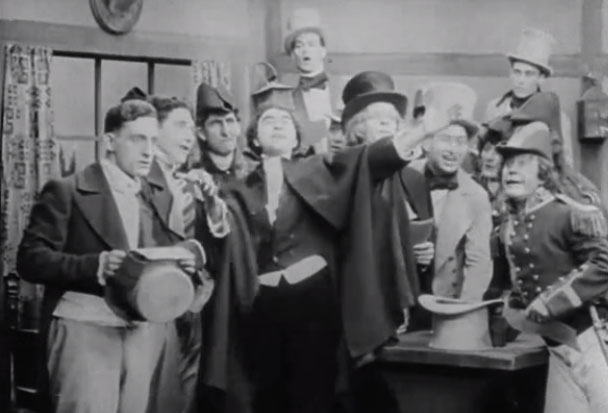
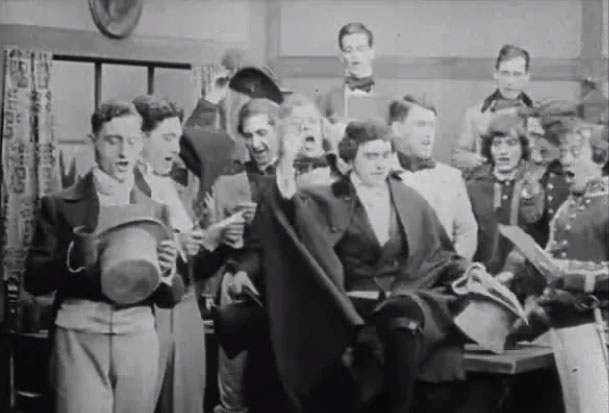
Screenshots of chorus
singing "The Star Spangled Banner."
Talking
Pictures - Edison's Kinetophone Minstrel Chorus Performance of "The
Star Spangled Banner," February 1913
A scene from an early presentation
of the Kinetophone (an Edison moving picture with recorded sound)
with a chorus performance of "The Star Spangled Banner"
is described in "Edison" by Edmund Morris in 1913 as follows:
At four P.M. on 17 February, Edison
stood in the wings of New York's Colonial Theater to monitor the
reactions of more than a thousand viewers to his portfolio of demonstration
shorts. The program began in expectant silence, with the usual shutter-flutter
emanating from the projection box. But when Hutchinson's stentorian
spokesman appeared on-screen and began to orate, there was a collective
murmur of astonishment. The wonder grew when the pretty girl sang
and Brutus and Cassius quarreled and Mephistopheles taunted Faust
and a group of minstrels (two in blackface) launched into a medley
of popular hits. The show climaxed with a chorus performance of
"The Star Spangled Banner." When it ended, the audience
sat spellbound for a long moment, then burst into applause and shouts
of "We want Edison!" He remained out of sight while the
calls, punctuated with rhythic handclaps, grew louder." (Morris,
Edmund, "Edison", Random House, New York, 2019, p. 142.)
See New York Times, 18 Feb. 1913.
Morris explains the following in a footnote
about the Library of Congress's restoration of this film: "There
is an unavoidable lapse in synchronism at the end, when "God
Save the King" plays in audio while minstrels mouth the words
of "The Star Spangled Banner" in video. This is because
the soundtrack derives from an alternative take, filmed for British
release." (Morris, "Edison," p. 670, footnote 145.)
The Kinetophone version of "God
Save the King" as described by Morris is below (at the end of
the Edison Minstrels "demonstration" film short).
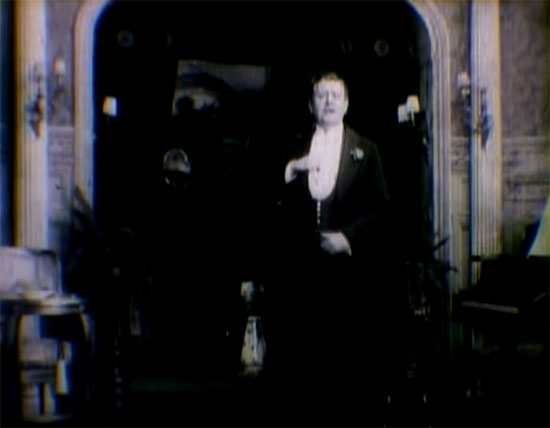
WATCH and LISTEN to 1913
Edison spokesman
introducing the Edison's talking films via Edison's Kinetophone
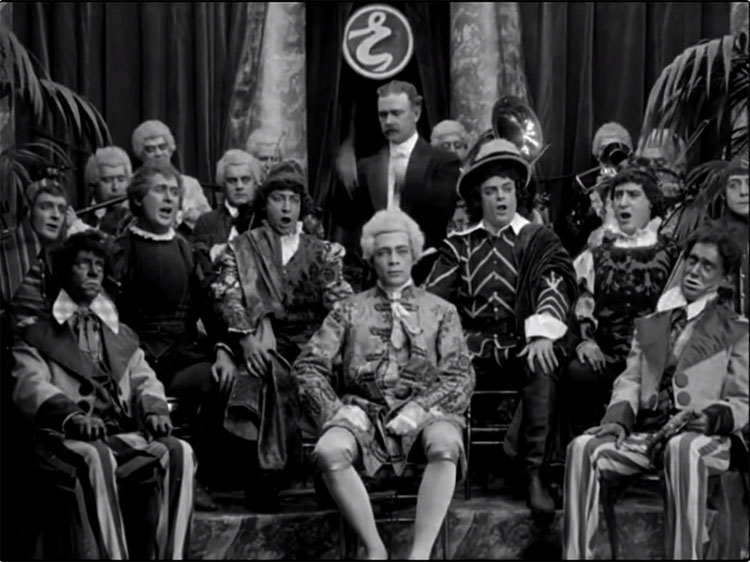
Edison
Ministrels (two in blackface)
Opening Overature, Kinetophone 1913 (Disclaimer)
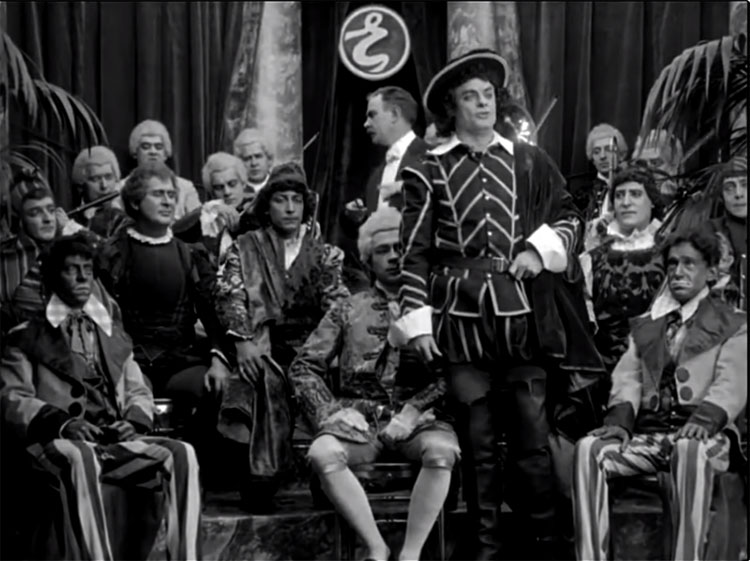
Baritone
Solo, Kinetophone 1913
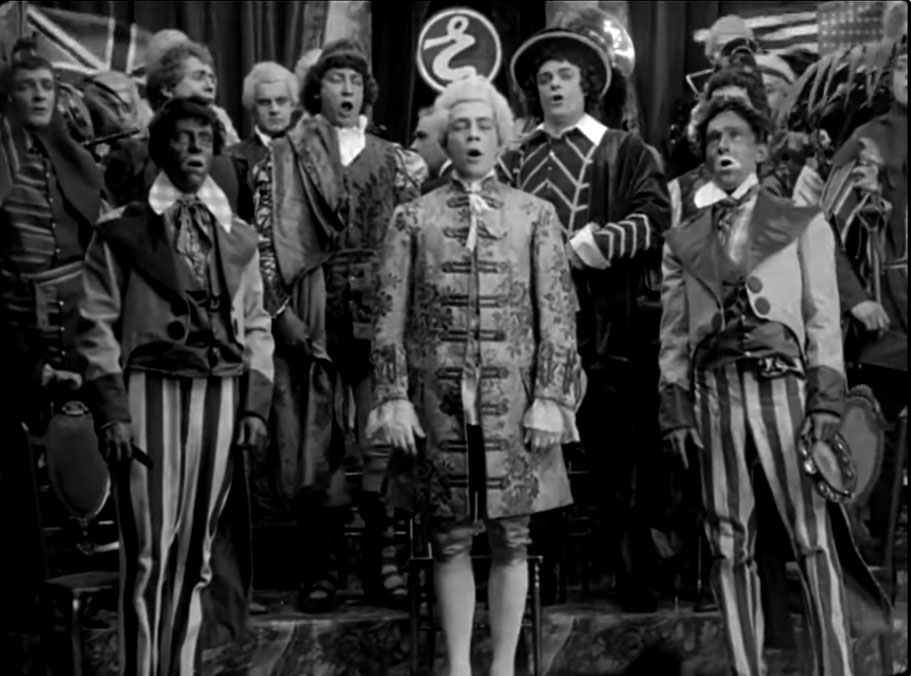
"God Save The King"
audio (British Version as performers are actually singing "The
Star Spangled Banner", Closing
segment of "Demonstration Portfolio" of Kinetophone,
1913
"Nineteen talking pictures were
produced in 1913 by Edison, but by 1915 he had abandoned sound motion
pictures."
Why were these unsuccessful?
The Library of Congress provides the
following explanation in their Early
Edison Experiments with Sight and Sound article:
There were several reasons for
this. First, union rules stipulated that local union projectionists
had to operate the Kinetophones, even though they hadn't been trained
properly in its use. This led to many instances where synchronization
was not achieved, causing audience dissatisfaction. The method of
synchronization used was still less than perfect, and breaks in
the film would cause the motion picture to get out of step with
the phonograph record. The dissolution of the Motion Picture Patents
Corp. in 1915 may also have contributed to Edison's departure from
sound films, since this act deprived him of patent protection for
his motion picture inventions.
Supplemental Notes:
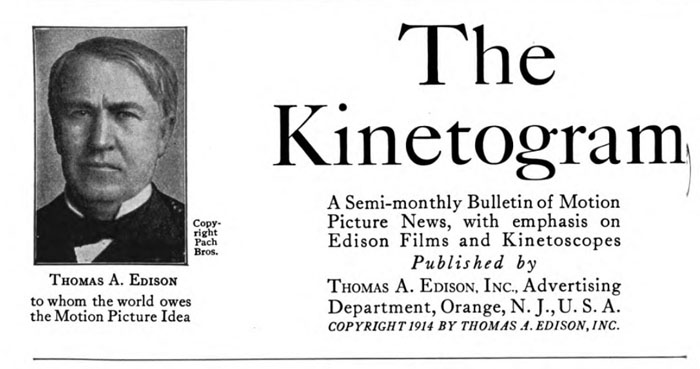
Edison's photograph
was featured as part of the The Kinetogram's banner,
February 1, 1914
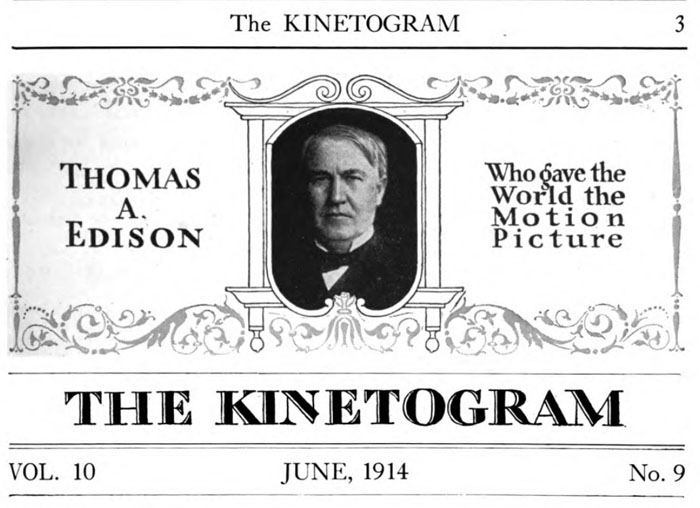
"The Kinetogram"
banner changed to a monthly news bulletin along with the Edison
'movie credit' going to Edison now noted as the one "Who gave
the World the Motion Picture" (previously "to whom the
world owes the Moving Picture Idea").